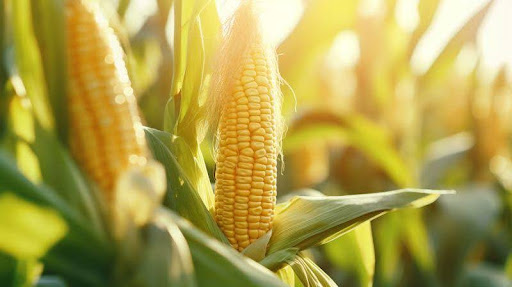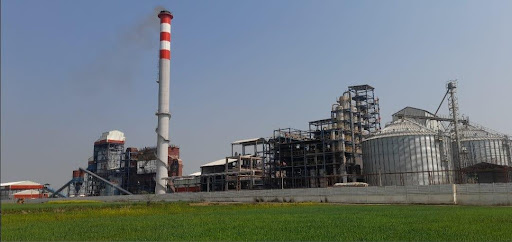
Introduction
Ethanol production through the fermentation of various feedstocks has gained considerable attention as a renewable energy source. Among the many feedstocks, grains such as corn, wheat, rice, barley, and sorghum play a crucial role due to their high starch content, which can be effectively converted into ethanol. Grain-based ethanol production is a multi-step process that relies heavily on enzymes to break down starches into fermentable sugars.
In this article, we will delve deep into the uses of enzymes in grain to ethanol fermentation. We will explore how these enzymes help in breaking down starch, the types of enzymes involved, the stages of fermentation, and the benefits of using enzyme-assisted processes. This piece is designed to provide insight into ethanol fermentation, making it a valuable resource for students, professionals, and industries alike.
The Role of Enzymes in Ethanol Fermentation
Enzymes are biological catalysts that accelerate chemical reactions. In ethanol production, they play an indispensable role in converting starches from grains into simple sugars that can be fermented by yeast to produce ethanol. The production process involves a series of enzymatic reactions that transform the complex carbohydrates present in grains into fermentable sugars such as glucose.
Grains such as corn, rice, maize, wheat, and barley are rich in starch, which is a polysaccharide made up of glucose units. However, yeast cannot directly ferment starch. Therefore, enzymes are needed to break down starch into glucose, which yeast can then ferment into ethanol.
Enzymatic Breakdown of Starch in Grain
The key process in grain-based ethanol production is the enzymatic conversion of starch into sugars. This conversion happens in two primary stages: liquefaction and saccharification.
Liquefaction: During this stage, the starch from the grains is gelatinized and broken down into shorter chains of glucose molecules known as dextrins. This process is facilitated by alpha-amylase, an enzyme that breaks down the internal bonds of the starch molecules. This is an essential first step because the long starch molecules are too complex for further enzymatic or microbial breakdown.
Saccharification: Once the starch has been broken down into dextrins, another enzyme, glucoamylase, comes into play. This enzyme breaks the dextrins down further into individual glucose molecules. This stage is critical because yeast can only ferment simple sugars like glucose to produce ethanol.
By breaking down starch into fermentable sugars, enzymes enable the efficient fermentation of grains into ethanol. Let's explore the various enzymes involved in this process in more detail.
Types of Enzymes Used in Grain-to-Ethanol Fermentation
In grain-to-ethanol fermentation, different types of enzymes are used at various stages of the process to break down starches and other complex molecules. Here is an overview of the key enzymes and their roles:
1. Alpha-Amylase
Alpha-amylase is an enzyme that plays a critical role in the liquefaction phase. It breaks down starch into dextrins by cleaving the internal bonds of the starch molecules. This enzyme works at a relatively high temperature (between 80°C and 90°C), which is ideal for industrial fermentation processes.
Alpha-amylase has two main characteristics:
Endo-acting enzyme: It cleaves the starch molecules from the inside rather than breaking them down from the ends.
Thermostable: Industrial alpha-amylase enzymes are designed to be active at high temperatures, allowing them to work effectively in large-scale operations.
2. Glucoamylase
Glucoamylase (also known as amyloglucosidase) is the enzyme that performs saccharification. It works by breaking down dextrins into glucose, a simple sugar that can be fermented by yeast. Unlike alpha-amylase, glucoamylase is an exo-acting enzyme, meaning it works from the ends of the starch chain, releasing glucose molecules one by one.
Glucoamylase operates at lower temperatures than alpha-amylase, typically around 55°C to 60°C, and is used after the liquefaction process to ensure that the dextrins are fully converted into fermentable sugars.
3. Pullulanase
While alpha-amylase and glucoamylase are the two primary enzymes used in grain-to-ethanol fermentation, other enzymes such as pullulanase are sometimes added to enhance the efficiency of the saccharification process. Pullulanase is a debranching enzyme that helps break down the branched components of starch, particularly amylopectin. By debranching the starch molecules, pullulanase aids glucoamylase in achieving a more complete conversion of starch to glucose.
4. Protease
In addition to starch, grains also contain proteins that can interfere with the fermentation process. Protease enzymes break down these proteins into smaller peptides and amino acids, improving the overall efficiency of fermentation. Proteases help by increasing yeast health and promoting better ethanol yields, as yeast requires nitrogen in the form of amino acids for growth and metabolism.
Stages of Grain-to-Ethanol Fermentation
The production of ethanol from grains involves several key stages, each of which relies on enzymes for the successful conversion of starches into ethanol.
1. Milling
The first stage in ethanol production from grains is milling. Grains are ground into fine particles to make the starch more accessible for the enzymatic processes that follow. Milling can be done either through dry milling or wet milling. Dry milling is the most common method in ethanol production.
2. Liquefaction
In the liquefaction stage, the ground grain is mixed with water to form a slurry. This slurry is then heated to gelatinize the starch, making it easier for enzymes to break it down. Alpha-amylase is added during this stage to break down the starch into dextrins, a process that occurs at high temperatures.
3. Saccharification
Once the starch has been liquefied, the slurry is cooled, and glucoamylase is added to break down the dextrins into glucose. This stage, known as saccharification, is essential because glucose is the primary sugar that yeast will ferment into ethanol.
4. Fermentation
After saccharification, the glucose-rich slurry is ready for fermentation. Yeast is added to the mixture, and the yeast cells convert the glucose into ethanol and carbon dioxide. The fermentation process typically takes about 48 to 72 hours, depending on the temperature and yeast strain used.
5. Distillation
Once fermentation is complete, the ethanol is separated from the fermented mash through distillation. The ethanol is then further purified to achieve the desired concentration, usually around 95% ethanol, for fuel or industrial use.
6. By-products
The production of ethanol from grains also generates valuable by-products such as distillers' grains and carbon dioxide. Distillers' grains, which are rich in protein, can be used as animal feed, while carbon dioxide can be captured and used in various industrial applications.
Benefits of Using Enzymes in Grain-to-Ethanol Fermentation
The use of enzymes in the grain-to-ethanol process offers numerous advantages, making it a preferred method for ethanol production. Here are some of the key benefits:
1. Increased Ethanol Yields
Enzymes such as alpha-amylase and glucoamylase ensure that the starches present in grains are fully broken down into fermentable sugars, leading to higher ethanol yields. By optimizing the enzymatic breakdown of starch, ethanol producers can extract more ethanol from the same amount of feedstock.
2. Cost Efficiency
Although enzymes represent an additional cost in the ethanol production process, they ultimately contribute to cost savings. Enzymes improve the efficiency of starch breakdown, reducing the need for excessive energy and chemicals in the production process. Additionally, higher ethanol yields mean more ethanol can be produced per unit of feedstock, reducing the overall cost of production.
3. Eco-friendly Process
Enzyme-assisted fermentation is a more environmentally friendly process compared to traditional chemical-based methods. Enzymes are biodegradable, non-toxic, and reduce the need for harsh chemicals that can harm the environment. The use of enzymes also results in cleaner by-products, such as distillers' grains, which can be used as animal feed without the risk of chemical contamination.
4. Energy Savings
The use of enzymes reduces the energy required to break down starches. For example, the liquefaction process, which occurs at high temperatures, can be energy-intensive. However, the efficiency of alpha-amylase in breaking down starch reduces the overall energy consumption, leading to significant energy savings in large-scale ethanol production.
Future Prospects of Enzyme Use in Ethanol Production
The use of enzymes in grain-to-ethanol fermentation is constantly evolving, with ongoing research focused on improving enzyme efficiency, stability, and cost-effectiveness. Genetic engineering is one area of innovation, where scientists are developing genetically modified enzymes with enhanced performance characteristics, such as improved heat tolerance and faster reaction rates.
Additionally, the integration of biotechnology with enzyme production is leading to the development of customized enzyme formulations tailored to specific feedstocks and production conditions. This allows ethanol producers to optimize their processes based on the unique properties of the grains they are using, leading to even greater efficiency and yield improvements.
Conclusion
Enzymes play a critical role in the production of ethanol from grains, facilitating the conversion of complex starch molecules into simple sugars that can be fermented by yeast. The use of enzymes such as alpha-amylase, glucoamylase, pullulanase, and protease enhances the efficiency, sustainability, and cost-effectiveness of ethanol production.
As demand for renewable energy sources continues to grow, the role of enzymes in ethanol production will only become more prominent. With advancements in enzyme technology, ethanol producers can look forward to even greater yields, lower costs, and a reduced environmental footprint.
For industries looking to optimize their ethanol production processes, partnering with The Catalysts Group can provide access to cutting-edge enzyme solutions that deliver consistent results and support sustainable biofuel production.
Recent Posts

The Role of Enzymes in Maize-to-Ethanol Fermentation
With the rising demand for renewable energy sources and sustainable fuel alternatives, ethanol production has gained significant momentum worldwide. Ethanol, also known as bioethanol, is a biofuel commonly used as a renewable alternative to fossil fuels. One of the most popular feedstocks for ethanol production is maize (corn), primarily due to its high starch content, wide availability, and suitability for large-scale production.

Challenges in Rice to Ethanol Fermentation and How to Overcome Them
Rice is one of the most important staple crops globally, particularly in Asia, where it constitutes a significant portion of daily food intake. However, rice also has tremendous potential as a feedstock for ethanol production due to its high starch content.

Role of Enzymes in Molasses to Ethanol Fermentation
The process of producing ethanol from molasses is a well-established method in the alcohol and fermentation industry. Molasses, a by-product of sugar production, is a highly suitable feedstock for ethanol production due to its rich sugar content. Enzymes play a critical role in the fermentation process, ensuring efficient conversion of sugars into ethanol.
Catalysts Connect
Keep up to date with our latest news and analysis by subscribing to our regular magazine and newsletter

Post a comment
Your email address will not be published.